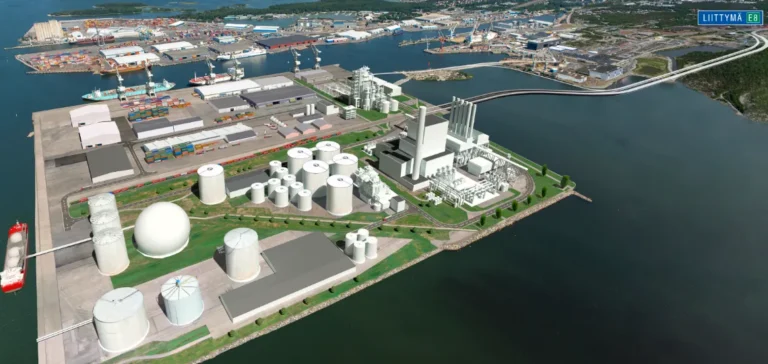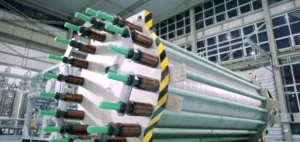Tree Energy Solutions (TES) and CPC Finland OY announce the establishment of a joint venture named Luoto Energia OY to develop a major electric natural gas (e-NG) project. The planned electrolyser capacity will reach 500 megawatts (MW), producing approximately 60,000 tonnes of renewable hydrogen annually, convertible into more than 125,000 tonnes per year of e-NG.
Infrastructure and strategic location
The production facility will be located on a 20-hectare site in a newly developed area of the Port of Rauma, at Iso Järviluoto. This port, one of Finland’s largest, occupies a strategic position in the southern part of the Gulf of Bothnia. The available infrastructure will enable liquefaction of the e-NG, facilitating its transportation to various markets.
The collaboration between the two companies combines their respective areas of expertise. TES provides its know-how in renewable synthetic gas production and commercialisation, while CPC Finland contributes expertise in renewable energy integration and complex technical project management.
Timeline and employment impact
The project is expected to enter its Pre-FEED (Front-End Engineering Design) phase in 2026, with the Final Investment Decision (FID) anticipated for 2028. The site already has a legally valid T/kem zoning plan, accelerating administrative procedures toward effective realisation.
According to the developers, construction will generate more than 1,000 jobs at peak activity, whereas, once operational, the facility will require approximately 40 permanent roles, primarily in plant operations and technical maintenance.
Supply and favourable regulatory environment
The biogenic carbon dioxide (CO₂) necessary for production will be sourced from Finnish emitters. The produced green hydrogen may also utilise the Nordic Hydrogen Route, a network currently under development by the national gas operator Gasgrid Finland.
Furthermore, Finland has recently integrated the European directive RED III into its national legislative framework, facilitating Renewable Fuels of Non-Biological Origin (RFNBO) projects. This regulatory approach encourages new large-scale project developments and reinforces Finland’s position as a key player in the European energy transition.
Marco Alverà, Chief Executive Officer and co-founder of TES, stated: “Launching this project in Finland marks a significant step in the energy transition, enabling the delivery of e-NG to the European market and strengthening its energy independence using existing infrastructure”.






















